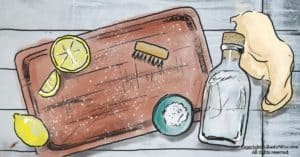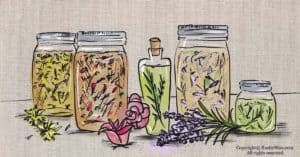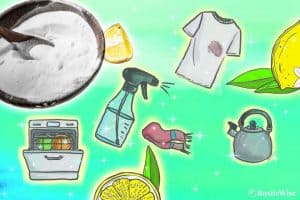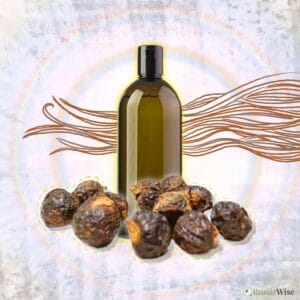How To Clean a Swedish Dishcloth 5 Ways
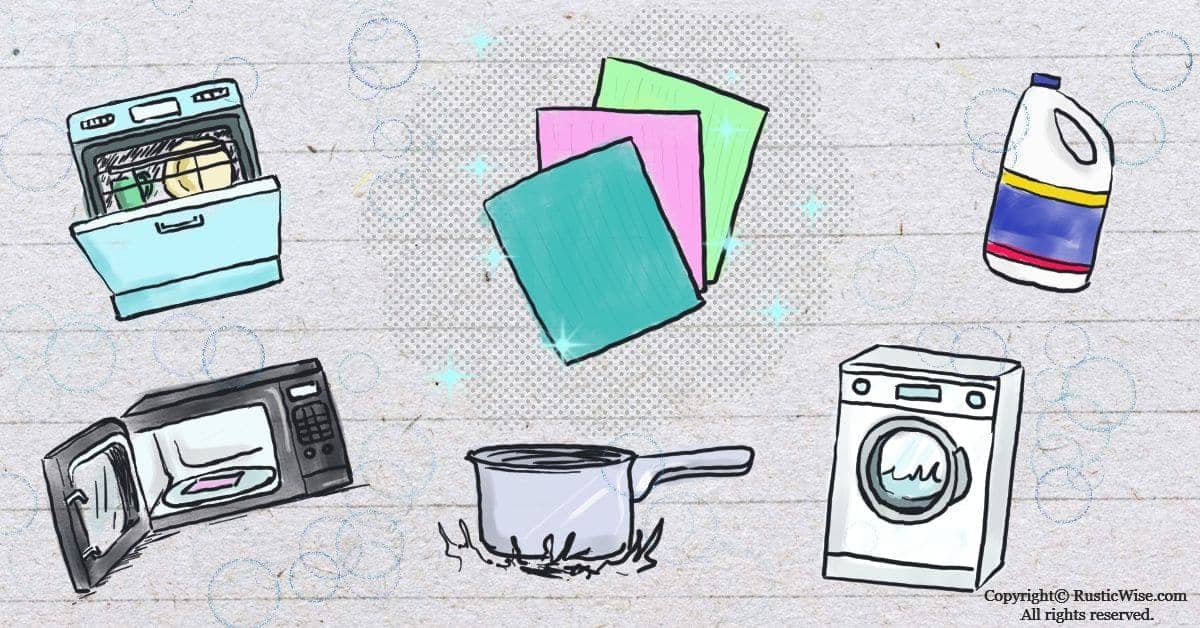
Swedish dishcloths are made of 70 percent cellulose and 30 percent cotton. It’s quickly gaining popularity in North America as it’s a simple, smart alternative to a traditional kitchen sponge. Not only is it eco-friendly, it’s also highly absorbent and easy to clean. We’ll explain how to clean a Swedish dishcloth using various methods: heating in the microwave, adding to the top rack of a dishwasher, boiling, adding to the washing machine, or bleaching.
One great aspect of a Swedish dishcloth is how long it lasts—it beats single-use paper towels in a heartbeat. Even so, we’ll share a few tips on how to prolong its life span in order to get more cleaning out of them.
Let’s dive right in!
A quick look at Swedish dishcloths
Making the transition away from paper towels can be tricky. If you’re looking to create a more environmentally-friendly home, stocking up on Swedish dishcloths is a good place to start.
Paper towel consumption has spun out of control in many households which contributes to environmental degradation, a waste of resources, and not to mention—a waste of money.
Part sponge, part absorbent towel, Swedish dishrags really are a versatile cleaning tool in the kitchen and around the house.
These handy dishcloths are made of natural and renewable materials: cellulose which comes from plant cell walls; and cotton. Together these two materials make a highly absorbent cleaning cloth which can hold up to 20 times its weight in water.
When dry, the dishcloths have a rough texture. To use a Swedish dishcloth, simply wet with water (or a cleaning liquid of your choice), wring out excess liquid, and wipe or clean as needed.
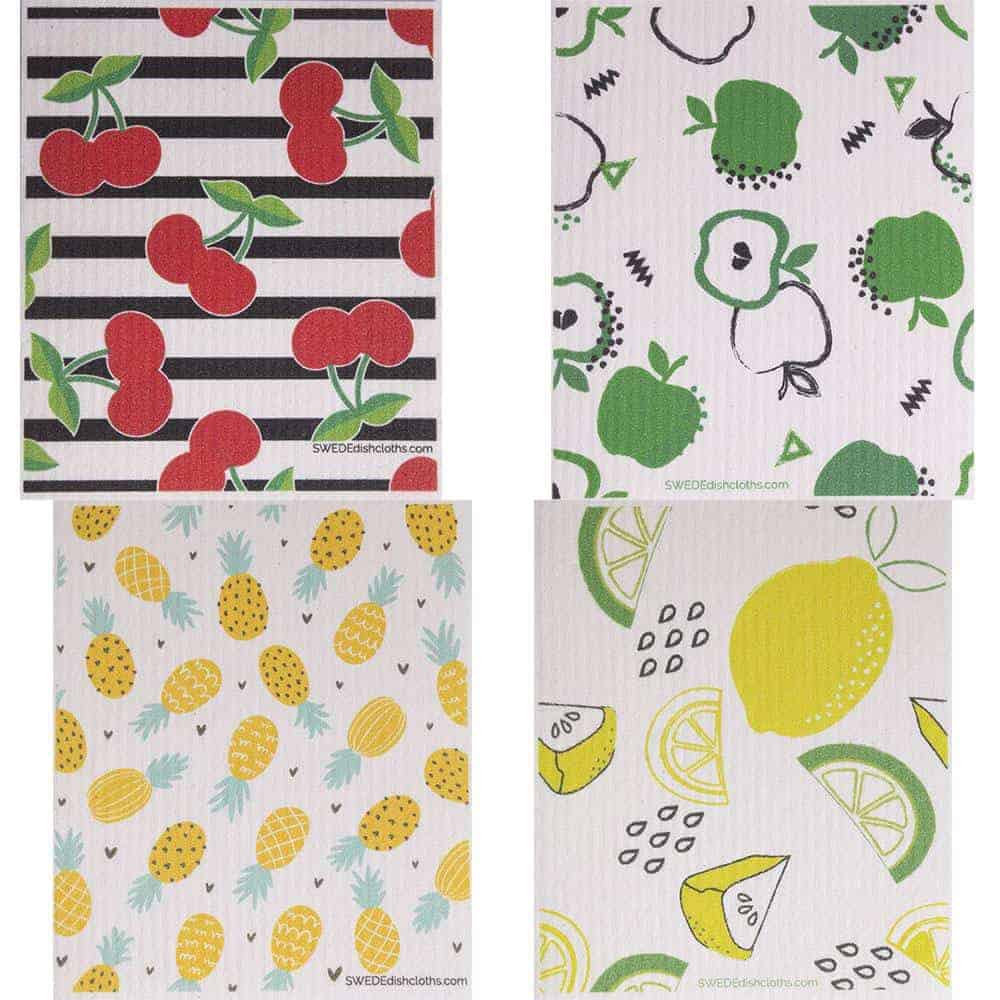
Are Swedish dishcloths more hygienic than sponges?
If you’re using a traditional kitchen sponge to wash dishes, you’re probably familiar with the fact that it’s a magnet for bacteria and other pathogens.
Sponges are made of synthetic materials such as polyester, and have a tendency to hold moisture for a long time. And we know that moist environments lead to unfavorable bacteria or mold growth. Wet sponges become a breeding ground for bacteria which leads to odors. (When you have a stinky sponge on your hands, it’s time to clean it!)
Swedish dishrags not only are great at soaking up spills, they also dry out quickly as well. The composition of lightweight cellulose and cotton—both breathable, natural fibers—leads to less bacteria multiplying.
Still, like everything, it’s a good idea to clean and disinfect your sponge periodically.
Cleaning vs. disinfecting
While the terms “cleaning” and disinfecting” are often used interchangeably, it’s a good time now to point a key differences between the two words.
How often do you need to clean a Swedish dishcloth?
It’s a good practice to clean your Swedish cloth after every use. This simply involves giving it a quick rinse with water to remove any debris, wring out excess water, and lay flat to dry. You can also drape the dishcloth over the faucet or along the edge of the sink.
It’s a good idea to disinfect your Swedish dishcloth every two or three days, depending on usage. Anytime you’ve used your dishcloth to wipe surfaces that have come in contact with raw meat, seafood, or poultry, it should be disinfected to prevent cross-contamination.
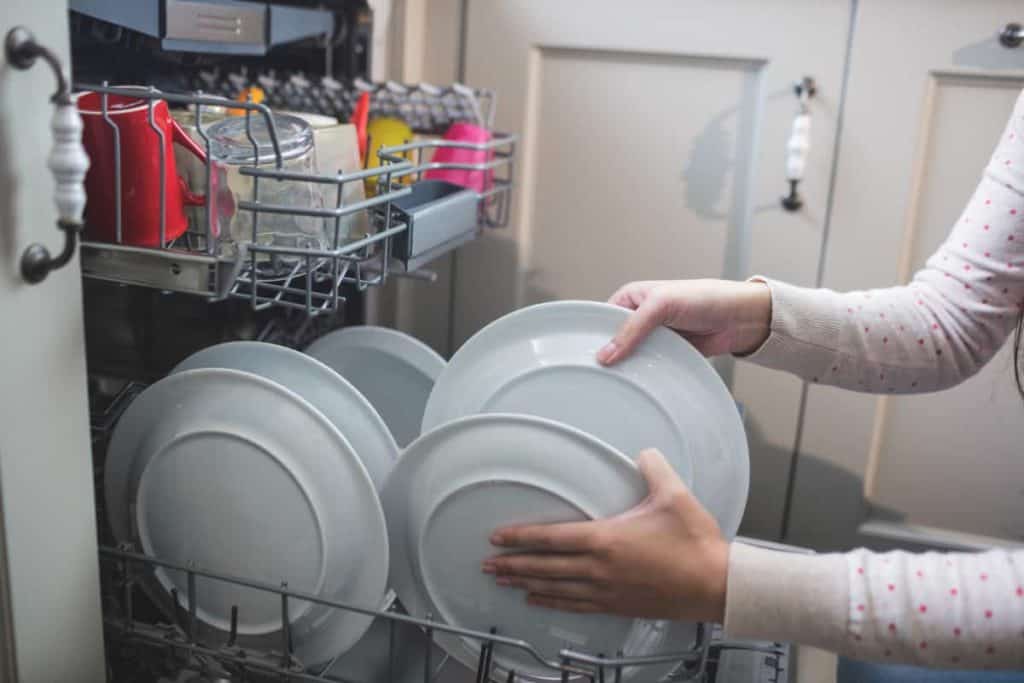
How to clean a Swedish dishcloth 5 ways
The following methods are great ways to both clean and disinfect your Swedish dishcloths.
1) Dishwasher
This is probably one of the easiest methods if you happen to run a full load of dishes every couple of days.
- Place your soiled Swedish dishcloth on the top rack.
- Run a normal cycle in your dishwasher along with other dirty dishes. If you want to disinfect, run a hot and long cycle in dishwasher.
- It’s best to air dry to avoid shrinking, so remove the dishrag if you’re running a drying cycle.
2) Microwave
- Thoroughly wet the Swedish dishcloth. This step is important as a dry dishcloth may be a fire hazard! Water ensures more even heat distribution.
- Microwave on high for 1 minute.
- Be careful handling the hot dishcloth! Allow the dishcloth to cool for several minutes before touching; or, pick up using prongs.
3) Washing machine
- Add to your laundry and run a warm wash cycle. DON’T use fabric softener as this makes your Swedish dishcloth less absorbent.
- Air dry for best results. Throwing in the dryer may cause shrinking.
Tip: The next two methods (boiling or bleaching) should not be used regularly as they may cause your dishcloth to deteriorate more quickly. Instead, stick with the first three methods listed above as your go-to cleaning methods, and save boiling or bleaching for filthy or smelly dishcloths.
4) Boiling
- Bring a pot of water to a boil.
- Boil the Swedish dishcloths for several minutes.
- Remove with prongs. Allow to cool before wringing dry.
5) Bleach
Michigan State University provides a few pointers on how to use bleach to sanitize a kitchen sponge or Swedish dishcloth:
- Make a solution using warm (not hot) water and concentrated bleach (8.25 percent sodium hypochlorite). Fill a basin with one quart of water and one-quarter to one-half teaspoon of bleach.
- Soak for 1 minute.
Tips on prolonging the life of a Swedish dishcloth
While these handy cleaning cloths are naturally durable and can withstand hundreds of washes, it’s still a good idea to take care of it to prolong its usefulness.
Here are a few tips:
- Rinse after each use: For mild cleaning around the kitchen such as wiping crumbs, rinse the cloth with hot water and squeeze out any excess. Hang your Swedish dishcloth in a well-ventilated spot after use for air drying so it’s ready for next time you need it.
- Avoid using on rough surfaces: While a Swedish dishcloth is safe to use on virtually all surfaces including stainless steel, glass, stone countertops, and glass, it works best on smooth ones. So, avoid using on rough surfaces which may snag or tear the dishcloth.
- Don’t put in the dryer: Natural fibers such as cotton and cellulose are prone to shrinking when exposed to heat for long periods of time. For best results, air dry. Avoid throwing in the dryer, or in the drying cycle of a dishwasher.
- Don’t use fabric softener: Fabric softener in general is not good for your laundry nor your Swedish dishcloths. Not only are commercial fabric softeners filled with chemicals, they make natural fibers such as towels and dishcloths less absorbent over time. Dryer sheets are also coated in fabric softener. Read more about why it’s time to ditch laundry sheets, and how to use vinegar to soften clothes instead.
- Avoid using strong detergents: Many concentrated chemical-based cleaners may cause your Swedish dishcloths to deteriorate over time. Stick with milder soaps and detergents, or natural cleaning solutions.
The takeaway: how to clean a Swedish dishcloth
The Swedish dishcloth is an eco-friendly alternative to the traditional sponge and serves as a paper towel replacement. It’s made of a blend of cellulose and cotton which makes it highly absorbent while also being biodegradable. There are five ways you can clean it—in the dishwasher, microwave, boiling on a stovetop, adding to a load in the washing machine, or bleaching it.
For more ideas on how to use this handy cleaning tool around the house, check out our article, How to Use a Swedish Dishcloth.
Related questions
How to store Swedish dishcloths
For daily use, your rinsed and wrung out dishcloth can be draped over the kitchen faucet, or along the side of the sink to air dry. Clean, extra dishrags can be stored flat in a drawer (their square-shape makes them easy to stack!), or upright in a napkin holder, or drawer divider.
Do Swedish dishcloths stain?
Like the average kitchen towel, or other natural textiles, Swedish dishcloths may stain depending on what you’re cleaning up. If you say, spill spaghetti sauce and don’t properly rinse the dishcloth after cleaning, it might stain. However, most stains are easy to remove.
To keep your cloths clean, simply rinse with warm water after use, and wring out excess liquid. You can try bleaching heavily soiled Swedish dishcloths.
👉If you like this post, see other Timeless Cleaning Tips You Need To Know.
Would you like more timeless tips via email?
Fun tips to help you live an independent, self-sustaining lifestyle. Opt-out at any time.


References
- University of Rochester Medical Center, In the Kitchen: Prevent the Spread of Infection, https://www.urmc.rochester.edu/encyclopedia/content.aspx?contenttypeid=1&contentid=1220. Accessed June 2021.
- Michigan State University, Sanitizing kitchen sponges, https://www.canr.msu.edu/news/sanitizing_kitchen_sponges. Accessed June 2021.

Author: Theresa Tesolin
Theresa is co-founder of RusticWise. She helps people unleash their inner DIY spirit by encouraging them to get dirty and make or grow something from scratch.


